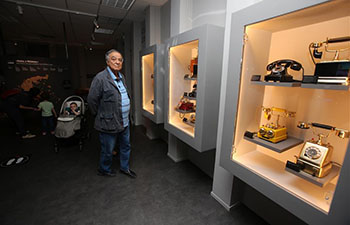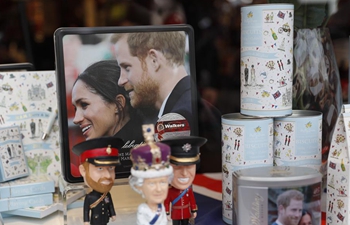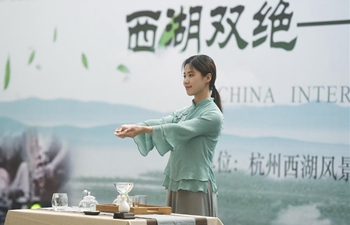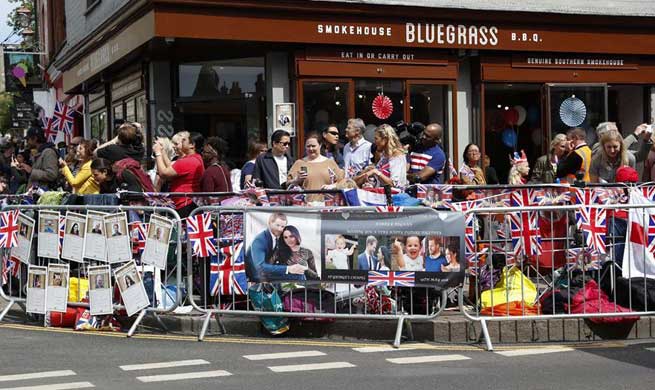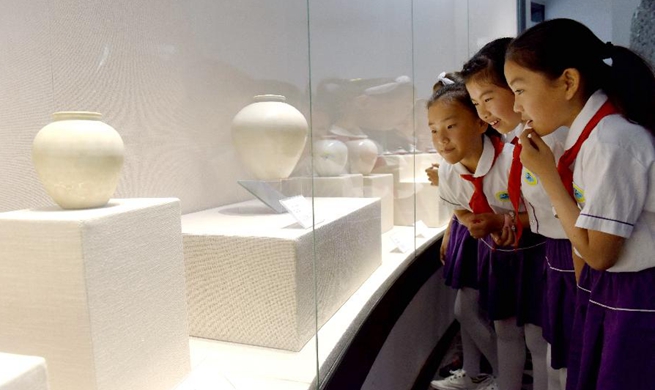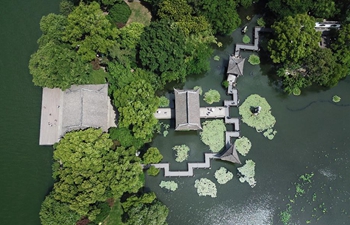WUHAN, May 18 (Xinhua) -- In a 30-sqm studio, Zhao Xiaolong carefully brushes adhesive paste onto a paper fan dating back to the Qing Dynasty (1644-1911) to try to restore it to its original glory.
Zhao, 30, is a cultural relics repairer at Hubei Provincial Museum in Wuhan, capital of central China's Hubei Province. The museum was established in 1953 and boasts more than 260,000 cultural relics.
"Most of the relics that need to be repaired face problems like microbe erosion and stains," Zhao said.
Zhao's story is representative of China's many cultural relics repairers as China observes the International Museum Day on Friday.
Zhao became obsessed with restoring cultural relics when he was a child.
"I did not have much money when I was young, but I would always sift through the items at flea markets to find what I thought was precious," he said. "After that, I brought the items home and desperately wanted to repair them."
Zhao recalled when a porcelain bowl in his house broke. As his grandmother was about to throw the shattered pieces away, he picked them up and put them back together with glue.
In 2009, when Zhao was still in college, he started to learn the art of repairing pottery ware from Master Chen Zhongtao at the Palace Museum in Beijing during his summer holiday.
"I also learned about repairing bronzeware and wood artifacts," Zhao recalled. "It was the best time of my life!"
In the studio, Zhao works with his wife Zhang Xiaolong. The couple are the same age and share the same given name. While Zhao is in charge of repairs, his wife researches the relic's chemical components and what chemical reagents are needed for the repair work.
The two met in 2010 when they both started working at Hubei Provincial Museum.
"He teaches me about the craftsmanship and the meanings behind each item," Zhang said. "He is my history teacher."
Repair work is not easy and can take a long time. Sometimes the process takes a year or even longer for one item.
"We try to restore the items to their original state," Zhao said. "The items should be intact, clean, and there should be no deformities."
Zhao said that when he encounters pictures that have been stained, he asks his wife for help.
"She majored in material science and can analyze the chemical components of the stains with high-precision equipment," Zhao said.
In the eyes of Fu Minghua, Zhao's teacher, he is a "very gifted" person when it comes to the art of repairing relics.
"He loves this profession and he has very good skills," Fu said. "But repairing cultural relics in China is a huge task and mastering the sills will take many years."
In recent years, China has placed increasing attention on the restoration of cultural relics, but given the number of items, the workload is overwhelming. In the provincial museum alone, for example, more than 6,000 items are waiting to be restored.
"Zhao and I can repair up to 30 items a year at most, and it seems to be an endless job," Fu said.
The hardship one has to endure when restoring the relics has made some young apprentices leave. "In 2015, we had 22 people on our team, but now only 15 remain," Fu said.
Zhao said he is committed to the job. "I don't think I will change my profession. In the future, I will try to find good apprentices to pass on my skills."
"China's relics need people like us to pass on our culture and history," he said.




